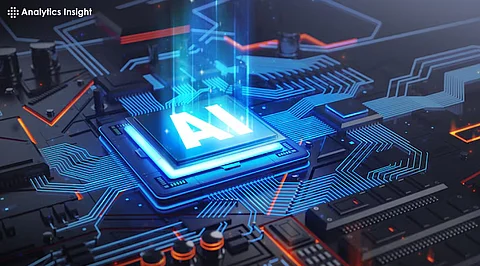

The major battle for leading the AI chip market has gained pace with the huge tech giants, such as NVIDIA, AMD, and Intel, in a contention to lead the AI world. AI and machine learning have now become the fundamentals of technology and thus these need to be given proper hardware in order to reach that best performance. All three firms have taken it to the next level, and cutting-edge AI chips are being designed to touch an unprecedented degree of artificial intelligence. The article is a comparison of these latest propositions and analyzes their performance, efficiency, and probable impact on AI development.
NVIDIA is synonymous with AI computing, primarily due to very efficient and powerful GPUs. The latest AI chip from the company, NVIDIA A100, has revolutionized deep learning and neural network training fields. Built on Ampere architecture, A100 delivers in phenomenal throughput and scalability to handle large-scale AI workloads.
It remains primarily focused on tensor cores, it leads the way in mixed-precision training, an efficient methodology for speeding up AI. The chips of this company have performed phenomenally in applications for high-performance computing and in the data center. Thus, this allows companies to speed up the training of their models of AI and gain improved accuracy.
This will be the first foray that microprocessor company AMD makes towards AI, long after its years of serving as a largest competitor in computing domain. The AI accelerator deals both with inference workload as well as training workload for improved performance, efficiency at per watt puts the MI300 on par with GPUs developed by NVIDIA.
But whereas balance between performance and power efficiency is where AMD shines, for businesses requiring super-powerful AI hardware, their sustainable environmental goals should also be headed in that direction. With stronger architecture through AI, AMD will continue testing how long NVIDIA holds its strongholds within the AI chip market.
Intel is leveraging data processing and server technologies know-how to push the limits of computing into AI. In that regard, its Habana Labs division has developed a Gaudi2 chip focused on AI training and inference workloads. The chip focuses on deep learning models where innovation in AI is directed at cloud computing, driverless cars, and also health care.
Intel is focusing on AI hardware, particularly in the areas that are highly efficient for data-centric environments like data centers and edge computing. This Gaudi2 chip would therefore provide the best performance in large AI models with training, scalable architecture, and total cost of ownership to the enterprise.
When comparing these three giants, NVIDIA, AMD, and Intel, it makes a lot of sense that they all look to target specific needs in the marketplace. NVIDIA tends to lead raw power and flexibility from deep learning research through real-time AI workloads applications. The A100 is one that shows a clearly marked benchmarking for performance inside of mass data centers that stand out obviously in the supercomputer environments.
The Instinct MI300 from AMD is much more power-efficient while still boasting high performance in AI. It's an important criterion because most companies are trying to keep low carbon footprints. In this regard, it is very suitable for companies targeting energy-efficient AI solutions for enterprise-scale AI applications.
However, the Gaudi2 chip stands out in emphasis on large AI computations with data-centric workloads as well, where cost-efficiency with scalability is sought after pretty nicely by cloud service providers, deploying massive-scale AI.
The market for AI chips is advancing quite fast, with NVIDIA, AMD, and Intel all shipping some state-of-art solutions that could fulfill many kinds of requirements. NVIDIA A100 excels in raw AI performance and flexibility, especially in deep learning environments. AMD Instinct MI300 is more prominent in energy efficiency and sustainable computing. Hence, it is preferred by the enterprises that are sensitive to environmental impact. Intel Gaudi2 shines in data-centric AI tasks and gives businesses operating in data-heavy industries strong performance.
Since AI is penetrating all sectors, this battle between these tech giants is bound to get stiffer. The choice among NVIDIA, AMD, and Intel depends on particular AI workloads, the performance required, or even sustainability goals.
